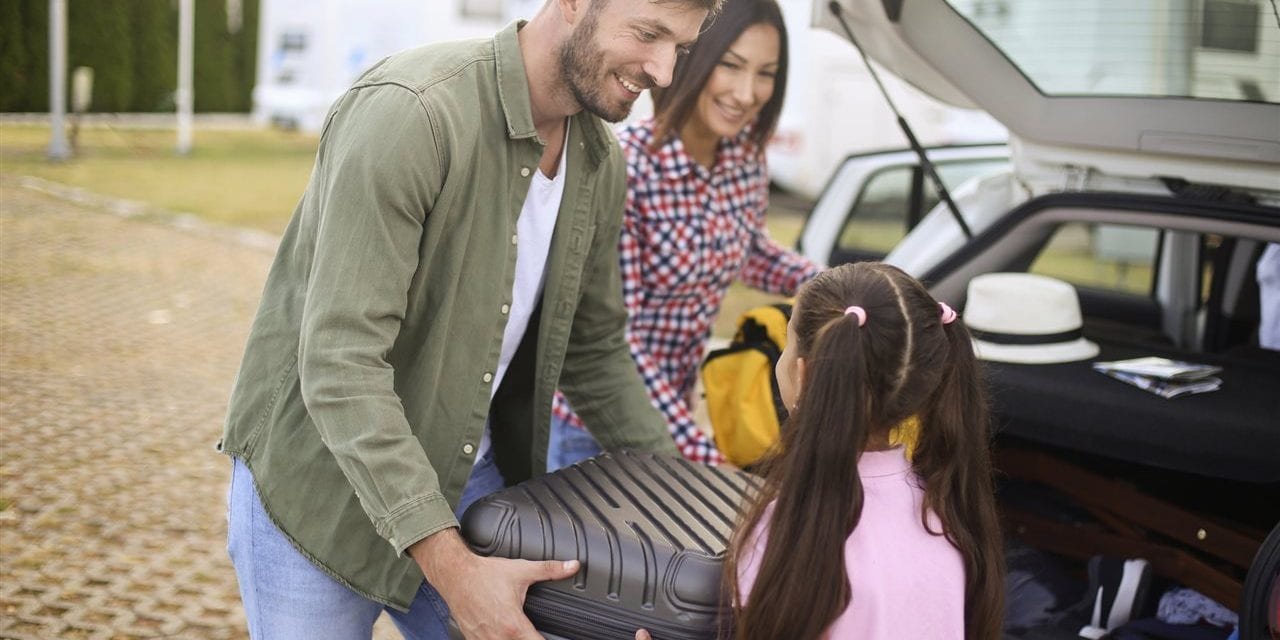Whether the length of your drive is three hours or 30 minutes, it can seem an eternity with a bored child in the car. A little planning will ensure your next road trip with one or more children will be happy and safe, no matter where you’re going.
Here’s how you and your kids can stay safe and enjoy the journey almost as much as the destination.
1. Factor in time for pit stops
Don’t try to crush a several-hour driving marathon to get there quickly. Children need frequent breaks to use the restroom, have a healthy meal — and release their pent-up energy. Look for signs of restlessness and stop before kids get too out of sorts.
When you stop, find a safe spot where your kids can stretch their legs and run around a little. If they’re sluggish, organize a quick game of tag or catch, or encourage them to do a jumping-jack competition.
If frequent stops are making you later than expected, call ahead to let people know you’re off schedule. Better to take your time and arrive safe and happy.
2. Make sure kids stay buckled up, the whole time
Help keep your kids safe by making sure your child is buckled up every time, for every ride. As older kids get restless, they may unbuckle themselves during a long drive. Make sure you’re checking periodically throughout the trip, not just when you first pull out of the driveway. After every rest stop or meal, ensure kids are buckled up before you head back on the road.
3. Bring games — and dust off your creativity
Age-appropriate hand-held games and books can be good diversions for your children on long trips. Find audiobooks the whole family can listen to during the trip.
Recall games you played during road trips with your parents. Did you spot license plates from different states? Say a certain word when you saw an animal or certain type of car? How about a game of I Spy? Start a guessing game like 20 Questions, or use yes-or-no questions to guess a famous person one of you thinks up. Stock up on knock-knock jokes or silly riddles to keep kids engaged with you and each other.
4. Keep kids under 13 in the back seat
No matter how long your trip is, children under 13 should never sit up front, for their own safety. Car safety standards and features, like air bags, are developed and tested with adult bodies in mind. Air bags can be inflated at speeds of up to 200 to 400 mph, and because kids’ bodies are still developing, they are safest in the back seat. Additionally, most crashes impact the front of the car, and the back seat is farthest from this impact.
5. Pack healthy snacks
Make sure each child has a refillable water bottle for the journey, plus healthy snacks they enjoy, like fruit, cheese sticks or yogurt. Choose age-appropriate snacks that won’t be a choking hazard, so you can focus on the road.
6. Bundle up safely
For the best protection in a car seat, your child’s harness should fit snugly. A bulky coat can create extra space between the child and their harness, increasing risk of injury in a crash. To keep your child safe and warm on the ride, dress your child in a lighter jacket and place a blanket over the harness if needed.
7. Before you go: Check that they’re in the right seat
A car crash can happen anywhere, anytime — so the right car seat for your children’s age and size is always important. Any upcoming road trip can be a good reminder to double-check that they’re in the right seat for their safety — and that it’s installed correctly.
Enter your child’s age, weight and height at NHTSA.gov/TheRightSeat to check if they’re in the right seat. On the website you can also get installation tips and find a location near you where a certified Child Passenger Safety Technician can help you check the seat’s installation.
Enjoy your road trip with the family using these tips, and you’ll all be safer and happier. Trips like these can be memorable for all the right reasons, and you and your kids may even have fun along the way.
(BPT)













